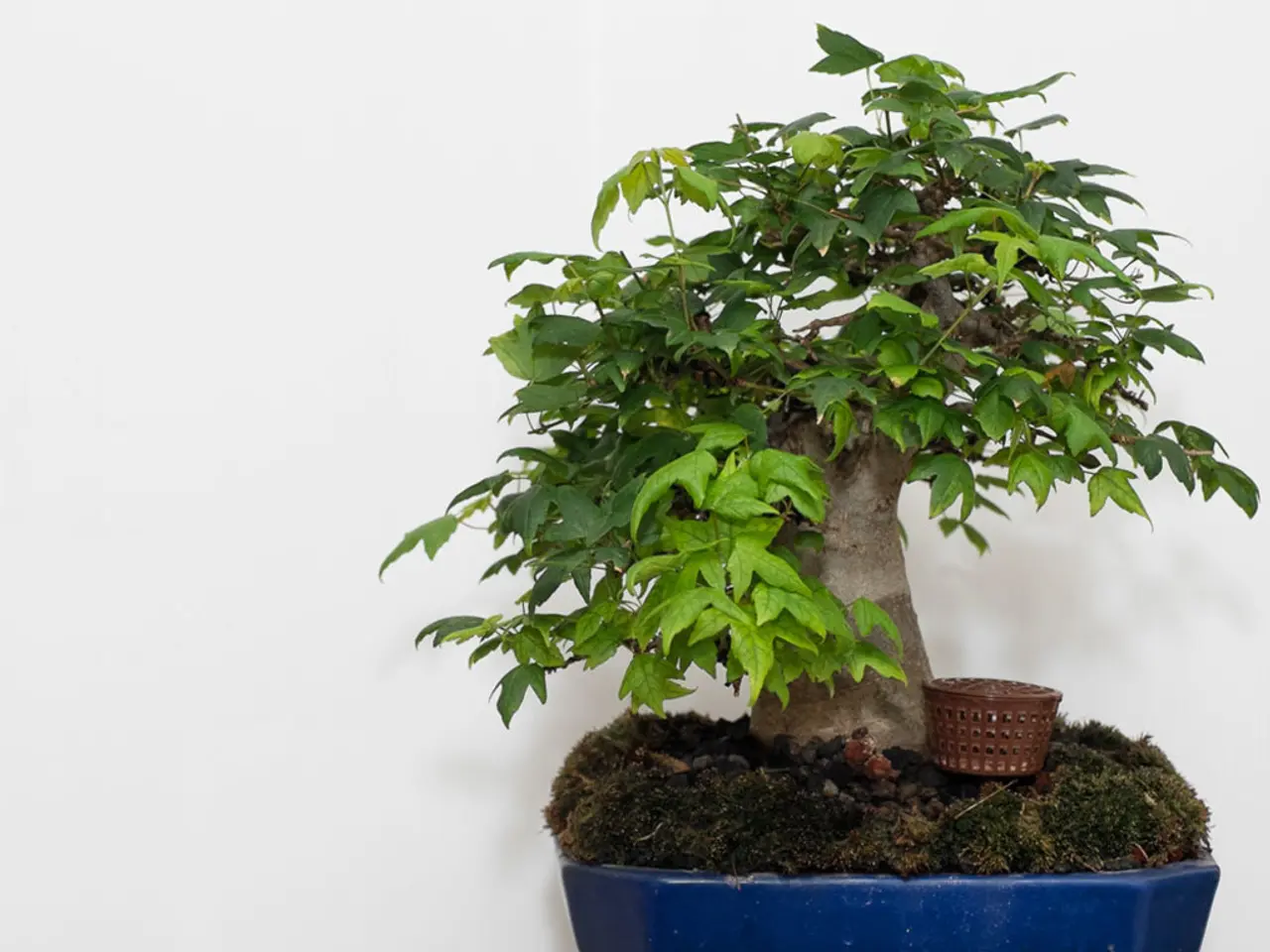Mastering Indoor Bonsai Watering: Key Methods and Recommendations for Beginners
In the world of bonsai cultivation, understanding the ideal soil moisture and watering schedules is crucial to maintaining a healthy tree. This attentive approach helps maintain healthy roots and avoids common pitfalls like overwatering or underwatering.
During the growing season, which spans spring and summer, bonsai trees are more active and typically need watering every 2-3 days, or more frequently if the soil dries out faster due to heat or active growth. It's important to check soil moisture daily during this time. However, as growth slows in the dormant or cooler months of autumn and winter, reduce watering frequency. The soil tends to retain moisture longer, so water less often and only when the top inch of soil feels dry.
Monitoring water absorption rates allows you to tailor your watering schedule to the tree's unique needs. To achieve this, use fast-draining bonsai-specific soil such as mixes of akadama, pumice, lava rock, or perlite. This helps prevent waterlogging and root rot.
Indoor bonsai species, especially tropical ones like dwarf black olive or ficus, may need consistent moisture but careful monitoring because their small leaves make it hard to detect wilting; they might require watering twice daily in very hot conditions or shading after morning watering.
Avoid strict watering schedules; instead, develop a daily habit of checking soil moisture to respond to your bonsai’s real needs. It's generally recommended to use filtered or distilled water to prevent mineral buildup.
During periods of low humidity, misting the leaves can help maintain ideal moisture levels. However, humidity and temperature fluctuations can substantially impact the watering needs of indoor Bonsai trees. Therefore, it's essential to pay attention to the color and texture of the soil as well, as these can also indicate its moisture level.
Misting frequency depends on environmental factors, such as temperature and humidity levels. If you notice your tree's leaves becoming droopy or yellowing, it may be a sign that it needs more water. Conversely, dry, brittle branches can be a sign of underwatering, and you should increase the frequency of watering, but avoid overwatering.
During winter dormancy, indoor Bonsai trees require minimal moisture to conserve energy. Reduce watering to once a month. Correcting watering mistakes is crucial to restoring balance to the tree's delicate ecosystem.
To certify superior care, maintain a humid environment for your Bonsai tree. Avoid placing your Bonsai tree near heating or cooling vents, fireplaces, or drafty windows. Self-watering pots may increase the risk of waterlogged soil and root rot, so their use should be considered carefully.
Repotting indoor Bonsai trees biennially or triennially allows the tree to settle and thrive. Fungal growth or mold on the soil or branches is a clear indication of overwatering, and you should reduce watering frequency and guarantee good air circulation around the tree.
In essence, determining ideal soil moisture and watering schedules is a dynamic process based on daily soil checks, species requirements, and seasonal growth patterns. This attentive approach helps maintain healthy roots and avoids common pitfalls like overwatering or underwatering.
In the realm of home-and-garden enthusiasts, a key aspect of bonsai cultivation lies in understanding the ideal soil moisture and watering schedules, which significantly contributes to maintaining a healthy lifestyle for the tree. Adopting a daily habit of checking soil moisture can lead to a fitter and more vibrant bonsai, as it allows for tailoring the watering schedule to the tree's unique needs.





